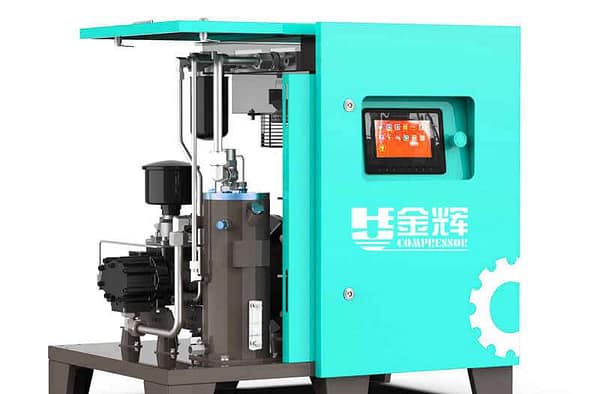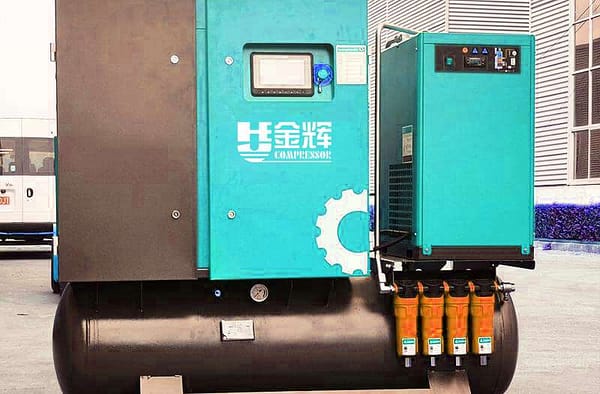
Wide range of compressed air applications: core uses of air compressors
Compressed air plays an indispensable role in modern industry and life as a safe, clean, easy-to-transfer and controllable power source and process medium. Air compressor as the core equipment to produce compressed air, its application range is extremely wide, almost penetrate into all industrial fields and many life scenes. Its main uses can be summarized into the following categories:
I. Power drive and tool operation
-
Traditional pneumatic tools: It provides strong power for rock drills, air picks, pneumatic wrenches, pneumatic screwdrivers, pneumatic sand blasting equipment and so on. Compressed air drive has the advantages of good overload protection, no electric spark (explosion-proof), high torque, relatively simple maintenance, etc. It is especially suitable for mining, construction, maintenance and other harsh working conditions.
-
Industrial automation drives: Drive the production line cylinder, pneumatic motor, pneumatic fixture, pneumatic valve and other actuators to realize the material gripping, handling, positioning, clamping, sorting and other automated actions. Its response speed, simple structure, relatively low cost, is the key power source for automated production lines and mechanical equipment (such as machining centers for automatic tool changer).
II. Processes and manufacturing
-
Material conveying and mixing: In the food, beverage, pharmaceutical and chemical industries, compressed air is utilized for safe pneumatic conveying of materials (e.g. powders, granules), slurry mixing (avoiding the risk of contamination associated with mechanical mixing) and fluidized bed operations.
-
Molding & Finishing: Bottle blowing machines use high-pressure air to blow mold the heated plastic embryo into various shapes of bottles (such as PET bottles); used in the casting industry for core shooting, molding; used in metal processing to cool the tool or workpiece, blowing debris.
-
Spraying and surface treatment: Provide atomizing power for paint spraying and powder spraying (coating) equipment to achieve uniform coating coverage; used for sandblasting, shot blasting and other surface cleaning, peening or furring treatment.
-
Textile production: In an air jet loom, the high-speed airflow precisely guides the weft yarns through the warp yarns, replacing the traditional shuttle and greatly improving weaving speed and efficiency.
-
Separation and purification: The air separation industry relies on large air compressors to provide raw air to produce industrial gases such as oxygen, nitrogen, argon and other gases through processes such as deep cooling or variable pressure adsorption.
III. Control, detection and instrumentation
-
Industrial Controls: As an instrument gas source, it provides stable and clean power for pneumatic regulating valves, positioners, sensors, logic controllers, etc., realizing precise control of process parameters such as pressure, flow, temperature, etc., and is widely used in process control systems in chemical, petroleum, electric power and other industries.
-
Tests and experiments: Wind tunnel experiments rely on high-flow compressed air to simulate a high-speed airflow environment for aerodynamic research on aerospace vehicles, automobiles, etc.; used for leakage detection, airtightness testing, etc.
IV. Transportation and vehicle systems
-
Brake and Assist Systems: Provides reliable power for the pneumatic braking system of large vehicles (trucks, buses, trains); controls the opening and closing of bus doors and train compartment doors; and is used for the adjustment of train suspension systems.
-
Tire Service: Inflates a variety of tires for automobiles, construction machinery, bicycles and more.
-
Specialized transportation: Hovercraft utilize compressed air to form a cushion of air on the bottom of the boat to achieve high speeds and amphibious capabilities.
V. Energy exploration and special engineering
-
Mining operations: High-pressure air blasting coal mining is a relatively safe mining method; supplying air to underground air-driven equipment and providing ventilation for the roadway.
-
Oil and gas: In oil well fracturing operations, the mixture of high-pressure air (or nitrogen) and fracturing fluid is utilized to fracture rock formations and increase oil and gas production; it is used for pneumatic control of subsea oil exploration equipment.
-
Metal smelting: In steelmaking and non-ferrous metal smelting, it is used for stirring gas blowing at the bottom of the furnace, spraying additives and providing oxidizing atmosphere.
VI. Special applications and national defense
-
Ship and Marine Engineering: Large marine diesel engines rely on high-pressure compressed air to start; submarines adjust ballast water tanks through compressed air to achieve sinking and floating; used for drainage and air cushion lifting in wreck salvage operations.
-
Weapons systems: Provides pressurization of missile tubes, missile ejection power; drives pistons in torpedo tubes to push torpedoes out.
-
High pressure applications: In some special industrial scenarios, extremely high pressure air is required for specific processes such as ultra-high pressure testing, molding of special materials or research.
summarize
From the automated production line in the factory floor to the rock drilling operation in the depth of the mine, from the speedy shuttle of the jet loom to the emergency braking of the ten-thousand-ton ship, from the precise instrumentation control to the powerful national defense equipment, compressed air is everywhere. The air compressor is the core equipment that transforms the ubiquitous air into this powerful, flexible and safe energy. Its diverse applications fully embodies the compressed air as the "fourth energy" (after electricity, water, steam) in the modern society of the cornerstone position. With the progress of technology, compressed air applications are still expanding and deepening.





